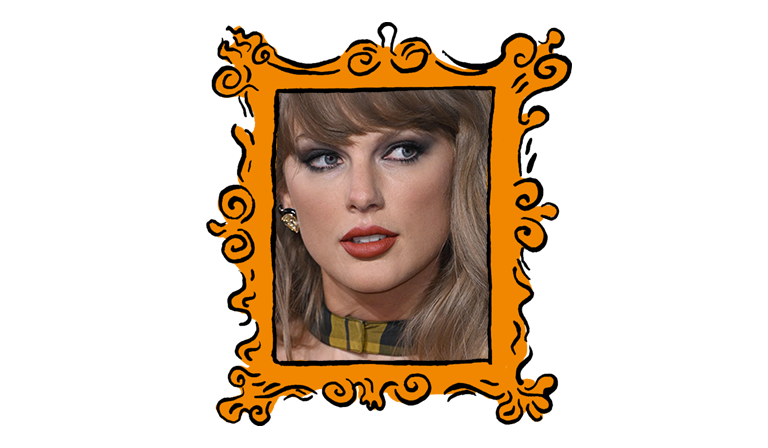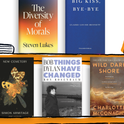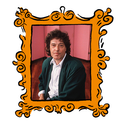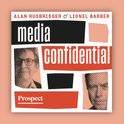I cannot imagine a better moment to publish a book about Taylor Swift. Two weeks on from the release of her 12th studio album, The Life of a Showgirl, the online discourse about the singer-songwriter has never been more intense—or, for that matter, unhinged.
The album features a dozen breezy pop and soft rock songs, which Swift promised would pull back the curtain on her record-smashing Eras tour. In reality, we hear more about her relationship with her American footballer fiancé Travis Kelce, as well as about her various beefs with other artists (“Actually Romantic” is a diss track rumoured to be aimed at Charli XCX) and the perils of life in the public eye, than about life on the road.
The songs about Kelce are some of the standouts on the album, but not necessarily for the right reasons. In “Wi$h Li$t” Swift fantasises about a quiet life in the suburbs with him. “Wood” is literally a celebration of the power his “manhood” has to “open her eyes” and—ahem—“open her thighs”. This settled Swift is a far cry from the yearning, melancholic or defiant figure of previous albums Tortured Poets Department, Evermore and 1989.
The Life of a Showgirl is “not terrible” writes Alex Petridis in the Guardian, but “it’s just nowhere near as good as it should be given Swift’s talents”. “Life of a Showgirl is a trite, saccharine, self-victimizing, resentful, inward, thoroughly fascist piece of art that is perfectly befitting for our current era” reads one rather less measured post on X.
Hating on Swift has long been a popular pastime—the hate itself is the subject of two songs on the new album. And Life of a Showgirl did receive positive billings in Rolling Stone and the New York Times and on the BBC website. But many other critics and online commentators are beginning to question whether Swift has lost the magic touch that made her music’s first billionaire. Which begs the question, what made Swift so unique in the first place?
Enter Harvard professor of English Literature Stephanie Burt and her new book, Taylor’s Version: The Poetic and Musical Genius of Taylor Swift. Burt made headlines last year when she ran a lecture course at the university called “Taylor Swift and Her World”, which was attended by more than 200 students. The first major academic to deem Swift’s writing as worthy of serious study, Burt has now published a book inspired by that class, taking us through Swift’s last 11 studio albums one by one, with an interdisciplinary approach combining literary analysis, musicology and biography.
For a Swiftie like me, the book is an absolute riot—it is a joy to dive into such detailed exploration of the songs that defined my adolescence. At various intervals, I felt inspired to listen to songs from Swift’s early albums, Fearless, Speak Now, Red, while reading. But I did have my doubts about the literary analysis: “Every big thing in Swift’s catalog has not just a musical precursor but an older literary parallel,” Burt writes. Was this a Havard professor reading the work of a naturally talented lyricist too closely? Are comparisons with Keats and Wordsworth a bit too much?
Burt argues—drawing from the work of another academic, Betsy Tontiplaphol—that “Swift matches the late Romantic poets and novelists known as the Biedermeier generation, who focused on nostalgia, disappointment, homeyness, and familiarity as balms for the passage of time. Those poets (Alfred, Lord Tennyson, for example) hoped their readers would feel recognized, supported, and seen.” This “companionship”, Burt claims, is part of what makes Swift such a powerful musician: she manages to be relatable to her fans, even in her superstardom.
“Although Swift lives with so much that… most people will never have—wealth, fame, poetic sensibility, racial privilege—she lives without the ability to be satisfied,” writes scholar and social worker Olivia Ordoñez, who’s quoted in the book. Burt believes that this “lack keeps her relatable, at least, to those of us brought up in achievement culture, with [Advanced Placement] tests and beauty myths and stacks of extracurriculars, or with loaded-up resumes and work-from-home, twenty-four-hour expectations.” By the end of the book, I was convinced by Burt’s argument: the combination of relatability and aspiration makes Taylor a singularly attractive literary friend.
Many critics of The Diary of a Showgirl claim that Swift has lost this relatability in her new album. “Do we still like Taylor when she’s happy?” asks Tyler Foggatt in the New Yorker, before concluding that Showgirl and particularly its songs about Kelce are “generic”, “disappointing” and much less Romantic than the music she wrote about her exes, including actor Joe Alwyn and musician Matty Healy.
On my first listen to the album, I too found the vibe-shift jarring, but after further listening I’ve begun to consider Swift’s rather simple odes to her happiness with Kelce deeply endearing. There is a tenderness to Swift expressing her desire for children in Wi$h Li$t”—“dreaming ‘bout a driveway with a basketball hoop”—and a vulnerability to her admission that she is not a “bad bitch” in “Eldest Daughter”, in her ability to return to a childlike joy with him.
This millennial Swiftie is happy that Taylor’s happy—as is Burt, who in an article for The Yale Review defended the album, claiming it could be Swift’s most honest yet. It’s just a shame that “everybody is so punk on the internet” that they can’t be happy for Swift too.
Is Taylor Swift a literary icon?
I dove into her latest album and a new book by a Harvard professor to find out...
October 23, 2025













